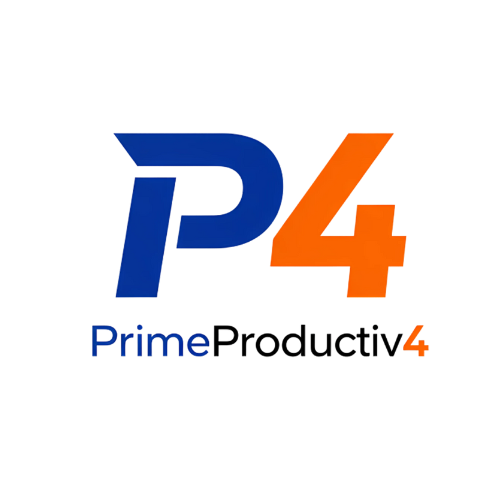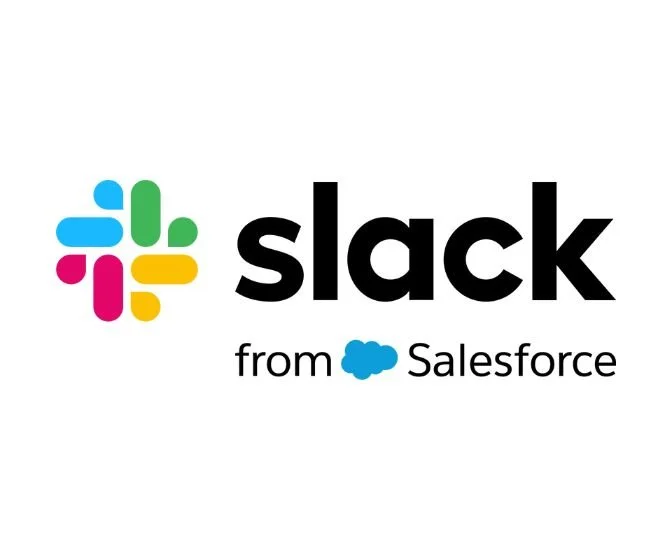Slack
Quick Overview
Type: Web App / Desktop App (Mac, Windows, Linux) / Mobile App (iOS & Android)
Pricing: Freemium (Free plan available, paid plans from $8.75/month per user billed monthly)
Best For: Teams of any size who want organized, real-time communication that replaces endless email threads
Website: https://slack.com
What is Slack?
Slack is the leading team communication and collaboration platform that has revolutionized how modern teams work together. Think of it as your digital headquarters - a central hub where conversations, files, tools, and people come together in one searchable, organized space. Instead of drowning in email chains and scattered messages, Slack organizes communication into channels by topic, project, or team, making it easy to find information and stay in sync.
What makes Slack transformative is how it replaces the chaos of email with structured, persistent chat that keeps everyone on the same page. Every conversation is searchable, every file is accessible, and every team member can see what's happening across projects without endless cc'd emails. Channels keep discussions organized, direct messages enable quick one-on-one conversations, and integrations with thousands of tools mean Slack becomes the nervous system connecting all your work.
Used by companies from small startups to enterprises like IBM, Salesforce, and Target, Slack has become synonymous with modern work communication. Whether your team is fully remote, hybrid, or in-office, Slack provides the infrastructure for seamless collaboration, reducing meeting time, eliminating email overload, and keeping everyone aligned on what matters most.
Key Features
Channels - Organized spaces for teams, projects, or topics where relevant people can communicate and share files
Direct Messages - Private one-on-one or small group conversations for quick discussions
Threads - Reply to messages in threads to keep conversations organized and reduce channel noise
Search - Powerful search across all messages, files, and channels to find anything instantly
File Sharing - Drag and drop files, images, and documents directly into conversations with preview and commenting
Integrations - Connect 2,600+ apps including Google Drive, Zoom, Salesforce, Jira, GitHub, and more
Slack Connect - Collaborate with external partners, clients, and vendors in shared channels
Voice & Video Calls - Built-in audio and video calling for quick huddles and meetings
Workflow Builder - Automate routine tasks with no-code workflows and custom forms
Mobile Apps - Full-featured iOS and Android apps keep you connected on the go
👍 Pros
Dramatically reduces email volume and makes team communication faster and more organized
Channels keep conversations focused and easy to follow compared to group email threads
Incredibly powerful search makes finding old conversations and files effortless
Massive ecosystem of integrations means you can connect virtually any tool your team uses
Great mobile apps keep remote and distributed teams connected seamlessly
Emoji reactions and GIFs make communication more human and fun
Free plan is genuinely useful for small teams getting started
Scales from small teams to massive enterprises without losing functionality
Regular updates and improvements keep the platform modern and competitive
👎 Cons
Can become overwhelming with notification overload if not configured properly
Always-on culture can lead to burnout and expectation of instant responses
Requires discipline to keep channels organized as teams grow
Information can get lost in busy channels despite good search
Paid plans become expensive quickly for growing teams
Video calling functionality lags behind dedicated tools like Zoom
Free plan's 90-day message history limit can be restrictive
Can encourage scattered communication and reduce deep work time if not managed well
Pricing
Free Plan:
Up to 90 days of message history
Up to 10 integrations with other apps
1:1 voice and video calls
10 workflow automations per month
Perfect for small teams testing Slack
Pro Plan - $7.25/month per user (billed annually) or $8.75/month (monthly) with 30-day trial:
Unlimited message history
Unlimited app integrations
Group voice and video calls with screen sharing
Unlimited workflow automations
AI conversation summaries
Guest accounts
Priority support
Best for small to medium teams
Business+ Plan - $12.50/month per user (billed annually) or $15/month (monthly) with 30-day trial:
All Pro features
SAML-based single sign-on (SSO)
99.99% guaranteed uptime SLA
Data exports for all messages
Advanced identity management
For larger teams with compliance needs
Enterprise Grid - Custom pricing:
Unlimited workspaces
Advanced security and compliance
Dedicated support team
Custom retention policies
eDiscovery and data loss prevention
For large organizations (500+ users)
Discounts:
Nonprofits and Educational institutions: up to 85% discount on paid plans
Integrations
Connects with: Google Workspace, Microsoft 365, Zoom, Salesforce, Jira, Trello, Asana, GitHub, Dropbox, OneDrive, Zapier, HubSpot, Zendesk, and 2,600+ other apps through native integrations and API
Learning Curve
Beginner Friendly: ⭐⭐⭐⭐☆ (4/5)
Slack is relatively easy to start using - sending messages and joining channels is intuitive. However, learning to use it effectively (managing notifications, organizing channels, using threads properly, leveraging integrations) takes time. Most people grasp the basics in a day but need a few weeks to develop good Slack habits and fully appreciate its power.
Best Use Cases
Remote Team Communication - Keep distributed teams connected with organized channels, video calls, and real-time messaging
Project Coordination - Create project-specific channels where team members share updates, files, and decisions in one place
Replacing Email - Reduce internal email volume by moving team conversations to Slack channels and DMs
Customer Support - Integrate support tickets and coordinate customer issues across support teams efficiently
Cross-Department Collaboration - Break down silos by creating channels that connect different departments and functions
Alternative Apps
If Slack isn't right for you, consider:
Microsoft Teams - Better if you're already using Microsoft 365, deeper Office integration, included with many licenses
Discord - Free alternative popular with communities, gaming-friendly, less business-focused
Google Chat - Simpler alternative for Google Workspace users, less feature-rich but tightly integrated
Mattermost - Open-source Slack alternative you can self-host for maximum privacy and control
Chanty - More affordable Slack alternative with unlimited message history on paid plans
Bottom Line
Slack has earned its position as the default team communication tool for modern organizations by genuinely solving the problem of email overload and scattered communication. If your team is still relying on email for internal communication, switching to Slack can feel transformative - conversations become more dynamic, information becomes more accessible, and coordination becomes significantly faster. The free plan is perfect for trying it with your team, and the paid plans are reasonably priced for the value delivered. However, Slack requires intentional management to avoid becoming another source of distraction and notification fatigue. Teams need to establish norms around response times, channel organization, and when to use Slack versus email or meetings. When used thoughtfully, Slack is exceptional; when used carelessly, it can create as many problems as it solves. It's best for teams committed to async communication, remote/hybrid work, and digital-first collaboration. If your team is small or prefers email, Slack might be overkill.
Frequently Asked Questions
Is Slack free?
Yes, Slack offers a free plan that includes unlimited users, channels, and messages - but with some limitations. The free plan only retains 90 days of message history, allows 10 app integrations and limits you to 1:1 calls (no group calls). For most small teams just getting started, the free plan is quite functional. Paid plans start at $7.25/month per user (billed annually) and remove these limitations with unlimited history, integrations, and enhanced features.
Is Slack safe and secure?
Yes, Slack takes security seriously with enterprise-grade encryption for data in transit and at rest, two-factor authentication, and compliance with major standards including SOC 2, SOC 3, ISO/IEC 27001, and GDPR. Business+ and Enterprise Grid plans add advanced security features like SAML SSO, data loss prevention, and enterprise key management. However, remember that Slack is cloud-based, so your messages are stored on Slack's servers. For organizations with strict data sovereignty requirements, self-hosted alternatives like Mattermost might be necessary.
How does Slack compare to Microsoft Teams?
Slack and Teams are direct competitors with similar core features but different strengths. Slack generally offers a better user experience, more intuitive interface, and superior app integration ecosystem. Teams has deeper Microsoft 365 integration, better value if you're already paying for Office 365 (often included), and more robust video conferencing. Slack is typically preferred by tech companies and startups, while Teams dominates in enterprises already using Microsoft products. If you use Google Workspace, Slack integrates better; if you use Microsoft 365 heavily, Teams may make more sense.
Can you use Slack for free forever?
Yes, you can use Slack's free plan indefinitely with no time limit. The free tier isn't a trial - it's a permanent plan designed for small teams with basic needs. However, the 90-day message history limitation means older messages disappear, which can be problematic for teams that need to reference past discussions. Many small teams use the free plan successfully by exporting important information before it expires or upgrading when they hit the limitations.
Does Slack work offline?
Slack has very limited offline functionality. You can view previously loaded messages while offline, but you cannot send messages, access channels you haven't recently opened, or see new messages. Slack is fundamentally designed as a real-time, cloud-based communication tool that requires an internet connection to function properly. If you need offline access to team communication, you'll want to supplement Slack with email or other tools.
Can external people join Slack?
Yes, through several methods. Slack Connect allows you to create shared channels with external organizations where both teams can communicate seamlessly. You can also invite external collaborators as single or multi-channel guests (paid plans only), giving them access to specific channels without seeing your entire workspace. For free plan users, external people would need to create accounts, but won't have guest restrictions. This makes Slack excellent for working with clients, contractors, and partners.
How many people can use Slack?
Technically unlimited on all plans including free. Slack scales from tiny teams of 2-3 people to massive enterprises with hundreds of thousands of users. The pricing is per active user, so you only pay for people who actually use Slack. Small teams can start on the free plan, and as you grow, you can upgrade to paid plans. Enterprise Grid is specifically designed for organizations with 500+ users who need multiple workspaces and advanced governance.
Get Started
Last Updated: October 2025
Category: Communication

